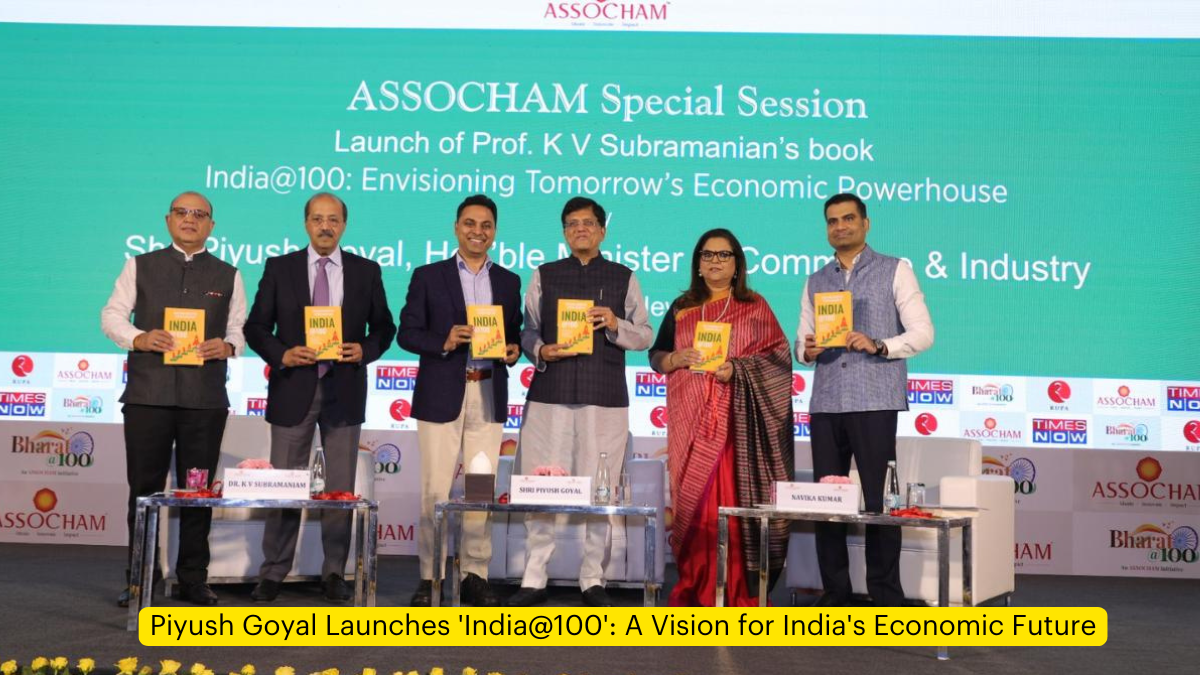Union Minister of Commerce and Industry, Piyush Goyal, unveiled a significant publication that charts India’s economic trajectory towards 2047. The book, titled “India@100: Envisioning Tomorrow’s Economic Powerhouse”, authored by Prof. K V Subramanian, was launched at a high-profile event in New Delhi. This launch marks a pivotal moment in India’s discourse on economic development and its aspirations to become a developed nation by its centenary year of independence.
The Book Launch Event
ASSOCHAM’s Initiative
The book launch was organized by the Associated Chambers of Commerce and Industry of India (ASSOCHAM), underlining the importance of this publication in the business and economic circles. The event brought together key stakeholders from government, industry, and academia.
The Book’s Vision
Economic Projections
Prof. K V Subramanian’s book presents a bold vision for India’s economic future:
- $55 Trillion Economy: The book argues for the possibility of India reaching this economic milestone by 2047, the centenary year of its independence.
- Comparison with Other Projections:
- Ernst & Young: Predicts India to be a $26 trillion economy by 2047
- Goldman Sachs: Forecasts India reaching $50 trillion by 2075
Growth Strategy
The book outlines strategies for achieving this ambitious goal:
- Replicating China’s Growth Model: Suggests that India could emulate China’s economic growth trajectory from 2000-2020.
- Sustained Growth Rate: Advocates for maintaining an 8% annual growth rate over the next few decades.
Minister Goyal’s Perspective
Political Stability as a Catalyst
Piyush Goyal emphasized the importance of political stability in achieving sustained economic growth:
- Long-term Stability: He expressed his belief in India having a stable government for at least the next 20-25 years.
- Growth Enabler: The minister highlighted how political stability could be a key factor in facilitating consistent economic policies and reforms.
Sectors of Focus
Goyal outlined various sectors that would play crucial roles in India’s journey to becoming a developed nation:
- Infrastructure Development: Emphasizing the need for world-class infrastructure to support economic growth.
- Employment Generation: Focusing on creating robust employment opportunities across sectors.
- Tourism: Leveraging India’s rich cultural heritage and diverse landscapes to boost the tourism sector.
- Manufacturing: Strengthening India’s manufacturing capabilities, possibly alluding to initiatives like ‘Make in India’.
- Shipping: Developing India’s maritime infrastructure and capabilities.
- Technology: Harnessing technological advancements to drive economic growth and innovation.




 Shikhar Dhawan's Autobiography Unveils ‘...
Shikhar Dhawan's Autobiography Unveils ‘...
 Top December 2025 Book Releases in India
Top December 2025 Book Releases in India
 Important Books and Authors – January to...
Important Books and Authors – January to...







